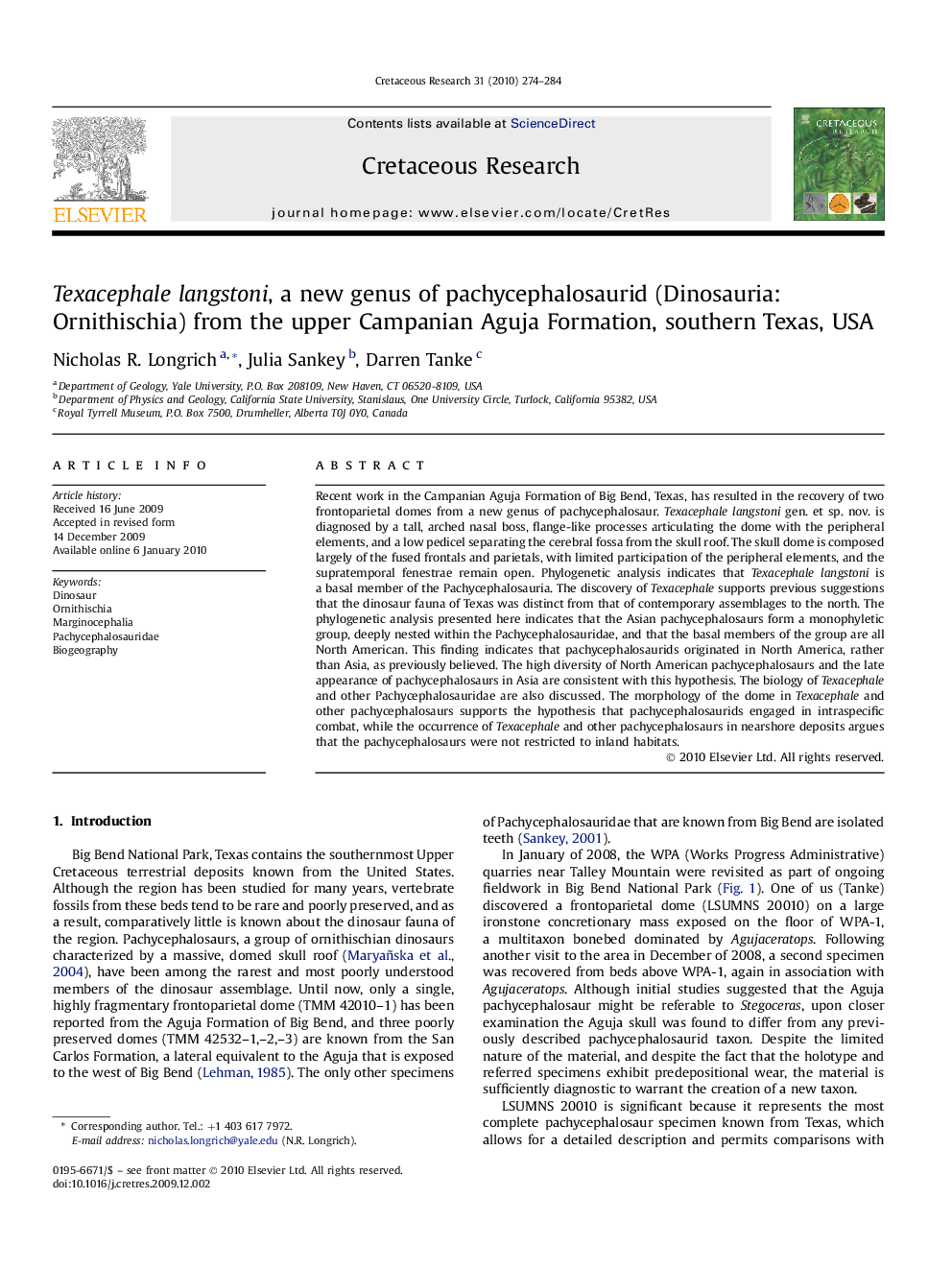| Article ID | Journal | Published Year | Pages | File Type |
|---|---|---|---|---|
| 4747513 | Cretaceous Research | 2010 | 11 Pages |
Recent work in the Campanian Aguja Formation of Big Bend, Texas, has resulted in the recovery of two frontoparietal domes from a new genus of pachycephalosaur. Texacephale langstoni gen. et sp. nov. is diagnosed by a tall, arched nasal boss, flange-like processes articulating the dome with the peripheral elements, and a low pedicel separating the cerebral fossa from the skull roof. The skull dome is composed largely of the fused frontals and parietals, with limited participation of the peripheral elements, and the supratemporal fenestrae remain open. Phylogenetic analysis indicates that Texacephale langstoni is a basal member of the Pachycephalosauria. The discovery of Texacephale supports previous suggestions that the dinosaur fauna of Texas was distinct from that of contemporary assemblages to the north. The phylogenetic analysis presented here indicates that the Asian pachycephalosaurs form a monophyletic group, deeply nested within the Pachycephalosauridae, and that the basal members of the group are all North American. This finding indicates that pachycephalosaurids originated in North America, rather than Asia, as previously believed. The high diversity of North American pachycephalosaurs and the late appearance of pachycephalosaurs in Asia are consistent with this hypothesis. The biology of Texacephale and other Pachycephalosauridae are also discussed. The morphology of the dome in Texacephale and other pachycephalosaurs supports the hypothesis that pachycephalosaurids engaged in intraspecific combat, while the occurrence of Texacephale and other pachycephalosaurs in nearshore deposits argues that the pachycephalosaurs were not restricted to inland habitats.
